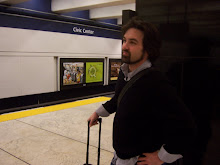 How bazaar! The entire city was recently invited to celebrate along with all of Chinatown, as it is every year at the start of the new lunar cycle. For their part, the businesses and residents of the neighborhood hosted a week of celebrations including a street fair, flower market, beauty pageant, 5K run, and, of course, the largest Chinese New Year Parade in the western world, which includes the Gum Lung, a 201-foot dragon dragged by a hundred martial arts experts down Market Street and back up into the heart of Chinatown.
How bazaar! The entire city was recently invited to celebrate along with all of Chinatown, as it is every year at the start of the new lunar cycle. For their part, the businesses and residents of the neighborhood hosted a week of celebrations including a street fair, flower market, beauty pageant, 5K run, and, of course, the largest Chinese New Year Parade in the western world, which includes the Gum Lung, a 201-foot dragon dragged by a hundred martial arts experts down Market Street and back up into the heart of Chinatown.
No map would call where I live part of Chinatown, but I am right on the border. The fact is the Chinese population of the region spills out well beyond the formal boundaries of the district. A large percent of the people I see on the street, and the shop owners on Polk, are at least Asian, if not Chinese. But, for all that, it's recognizable as part of an American city.

China town, not so much.
Yes, this is where that Kurt Russell movie Big Trouble in Little China was filmed. And, of course, that's an exaggeration, but the truth is that it does feel like another world compared to the rest of the city. Just a few blocks from me, on the other side of Nob Hill, between here and North Beach, English is rarely heard or seen except for on the standard tourist fare of San Francisco hats, shirts, and sweatshirts.
Though I'd walked around Chinatown lots of times on my way to other places, I hadn't really taken time to explore it, to talk a little bit to the people, as much as that's possible. Perhaps they purposely put the least Americanized members of the community out in front running the shops to maintain the integrity of the culture, but I don't know.
 The elders of Chinatown left that country before it was the modern global superpower it is today. Though I can only imagine what the neighborhood was like a few decades ago, it still seems to possess the feel of a rural mid-twentieth century China that might be difficult to find today in Beijing. Maybe.
The elders of Chinatown left that country before it was the modern global superpower it is today. Though I can only imagine what the neighborhood was like a few decades ago, it still seems to possess the feel of a rural mid-twentieth century China that might be difficult to find today in Beijing. Maybe.But what can be found right to this day is some incredibly good prices. $2.99 for a pound of raw walnuts: where else can you get that? And longan berries, where can you even get those at all? Stockton Street is a smorgasbord. There's whole smoked chickens hanging in the windows, mysterious herbs, fish, all manner of dried fungi, and strange ve
 getables I've never seen before. Yeah, there's also a wide assortment of swords, knives, and all the fun stereotypical stuff you'd expect. I don't know how they do it, but it's all priced to move. I keep going back.
getables I've never seen before. Yeah, there's also a wide assortment of swords, knives, and all the fun stereotypical stuff you'd expect. I don't know how they do it, but it's all priced to move. I keep going back.In other news, the rains have finally hit the Bay Area, which is good because the entire state is in drought conditions. There's already some concern that water will have to be cut off to farmers, which would drive produce prices up around the country. The whole thing is a bit fishy to me, since our U.S. Sena
 tors have supported a plan to divert sufficient water supplies in the San Joaquin Valley for the restoration of salmon habitat. It's this very same water that will be denied the farmers. Maybe it's too soon to say this will become an emergency, but I'd say it reeks of a manufactured crisis, you know, the fish rotting from head. Quite a bit like Chinatown, actually.
tors have supported a plan to divert sufficient water supplies in the San Joaquin Valley for the restoration of salmon habitat. It's this very same water that will be denied the farmers. Maybe it's too soon to say this will become an emergency, but I'd say it reeks of a manufactured crisis, you know, the fish rotting from head. Quite a bit like Chinatown, actually.But the rain is probably good for another reason. I just learned from the Hastings Tower management there's only about a month until I need to start putting money down on my unit for the fall. That means I'm going to have significantly less time than I'd expected... so it's time to get writing!








































